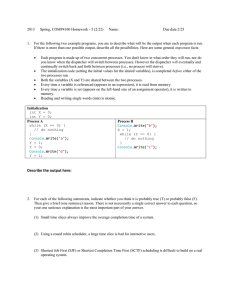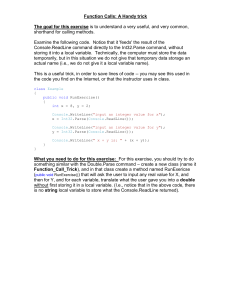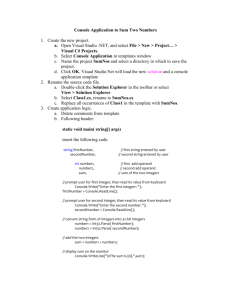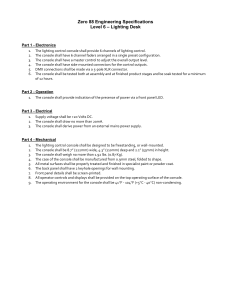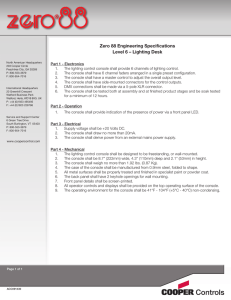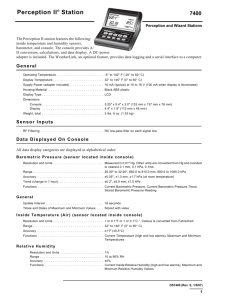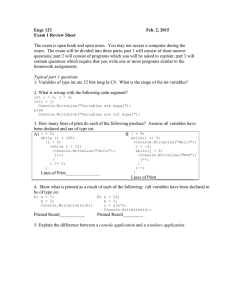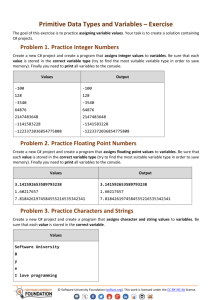C# Console Input/Output Exercise: Number Formatting
advertisement
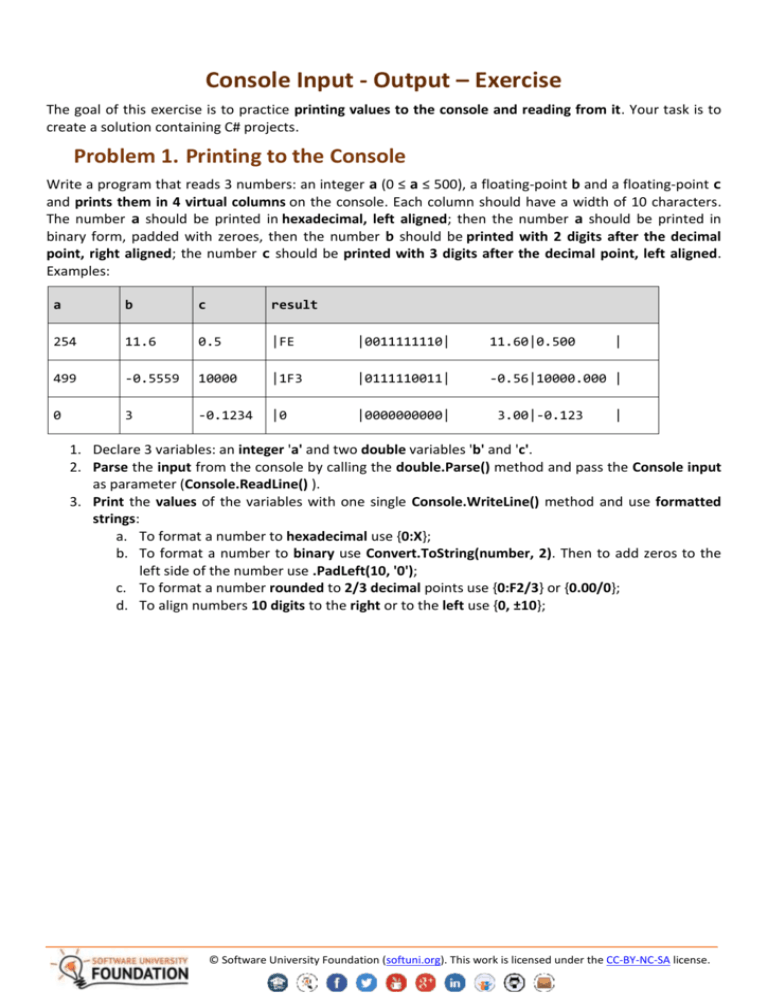
Console Input - Output – Exercise
The goal of this exercise is to practice printing values to the console and reading from it. Your task is to
create a solution containing C# projects.
Problem 1. Printing to the Console
Write a program that reads 3 numbers: an integer a (0 ≤ a ≤ 500), a floating-point b and a floating-point c
and prints them in 4 virtual columns on the console. Each column should have a width of 10 characters.
The number a should be printed in hexadecimal, left aligned; then the number a should be printed in
binary form, padded with zeroes, then the number b should be printed with 2 digits after the decimal
point, right aligned; the number c should be printed with 3 digits after the decimal point, left aligned.
Examples:
a
b
c
result
254
11.6
0.5
|FE
|0011111110|
11.60|0.500
499
-0.5559
10000
|1F3
|0111110011|
-0.56|10000.000 |
0
3
-0.1234
|0
|0000000000|
3.00|-0.123
|
|
1. Declare 3 variables: an integer 'a' and two double variables 'b' and 'c'.
2. Parse the input from the console by calling the double.Parse() method and pass the Console input
as parameter (Console.ReadLine() ).
3. Print the values of the variables with one single Console.WriteLine() method and use formatted
strings:
a. To format a number to hexadecimal use {0:X};
b. To format a number to binary use Convert.ToString(number, 2). Then to add zeros to the
left side of the number use .PadLeft(10, '0');
c. To format a number rounded to 2/3 decimal points use {0:F2/3} or {0.00/0};
d. To align numbers 10 digits to the right or to the left use {0, ±10};
© Software University Foundation (softuni.org). This work is licensed under the CC-BY-NC-SA license.


